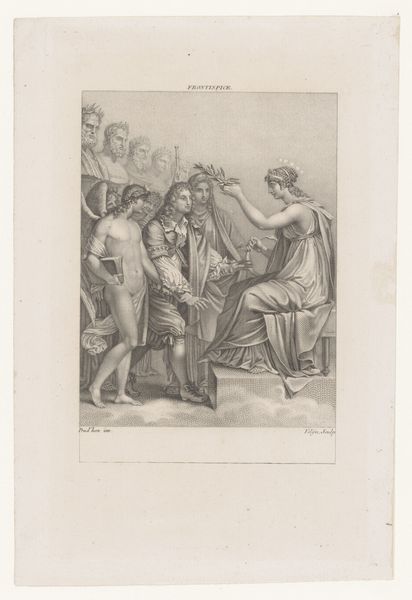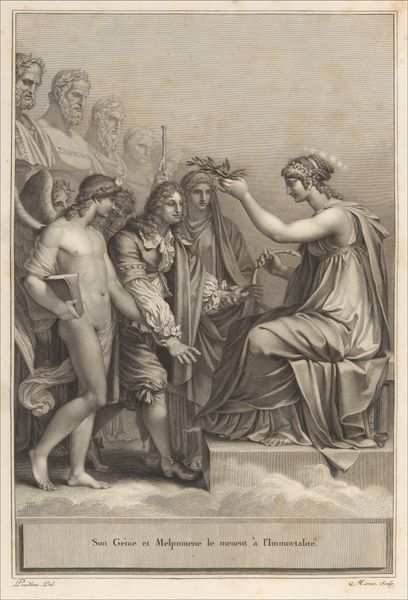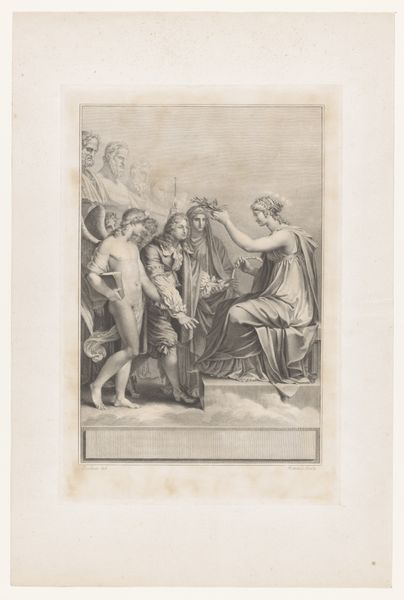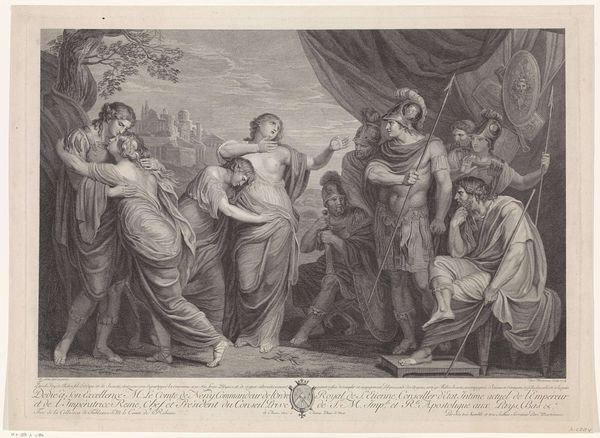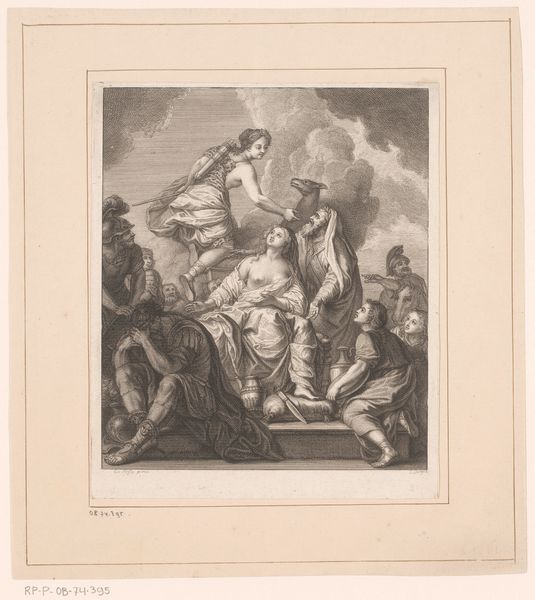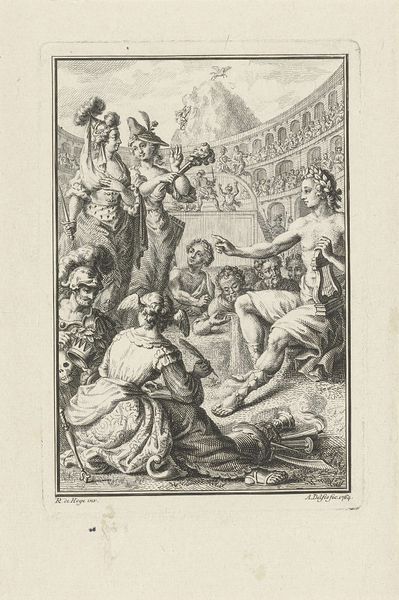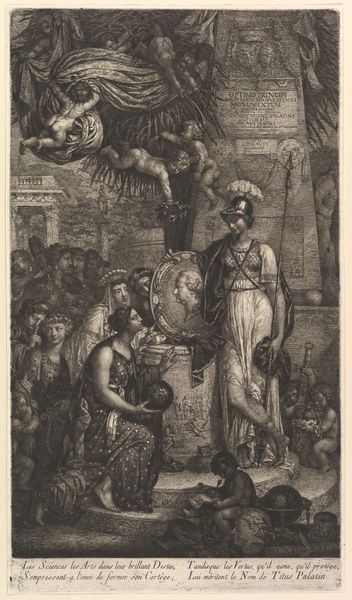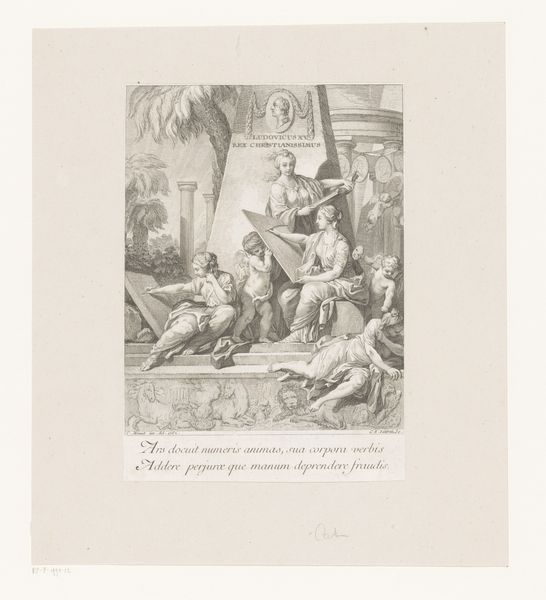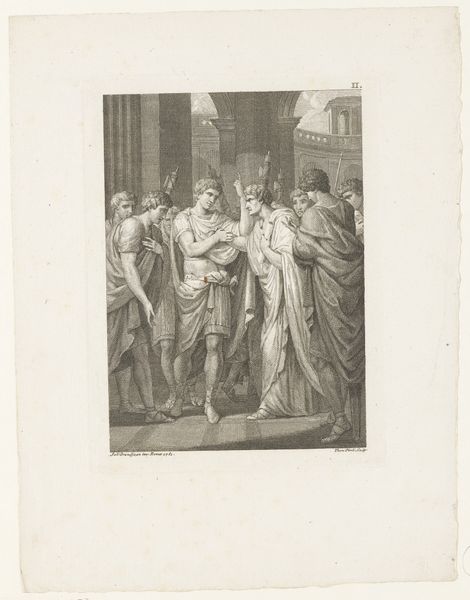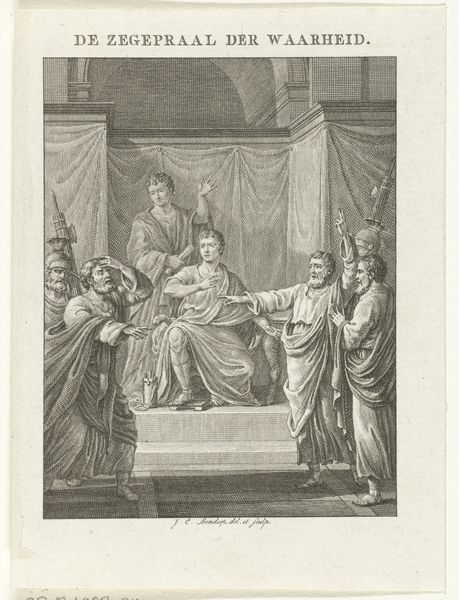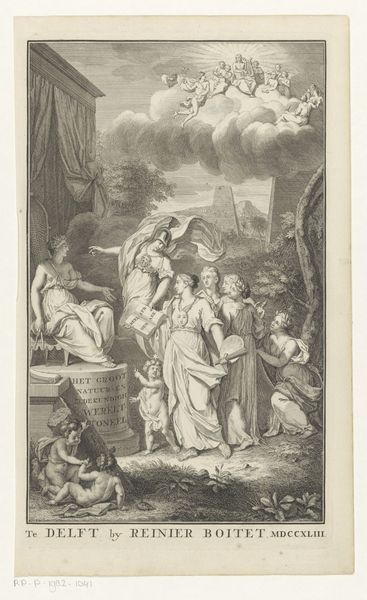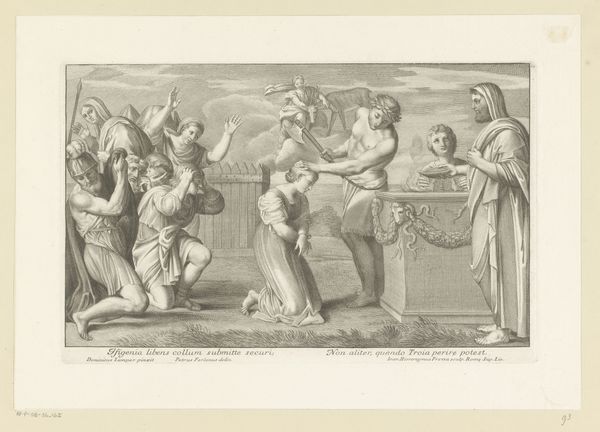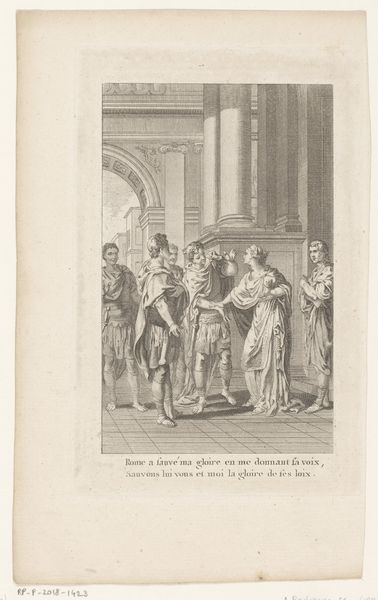
print, engraving
#
portrait
#
neoclacissism
#
allegory
# print
#
old engraving style
#
classical-realism
#
figuration
#
classicism
#
line
#
history-painting
#
academic-art
#
engraving
Dimensions: height 420 mm, width 282 mm
Copyright: Rijks Museum: Open Domain
Curator: This print, created sometime between 1797 and 1897 by Louis Alexis Léon de Pellicot, is entitled "Apotheose van Jean Racine." The allegorical scene depicts the deification of the French dramatist. Editor: My first impression is that it’s rather…stiff. Very formal, and quite monochrome! Almost like a philosophical theater production rendered in shades of grey. All that neoclassical imagery! Makes you wonder about Racine’s actual personality, doesn't it? Curator: Exactly! Pellicot situates Racine within a very specific ideological framework. Notice how Racine is accompanied by allegorical figures? That’s probably his Genius holding a book, and Melpomene, the muse of tragedy. Above, the busts of classical writers oversee the proceedings, lending historical legitimacy to Racine's place in the canon. Editor: And, naturally, Immortality herself crowns Racine. It is kind of cool how everyone is gazing at him. Although it almost feels like they are queuing for his autograph! Seriously, I get this very strange feeling that this image wants me to consider power and status, rather than appreciate artistic merit. Curator: That's insightful. Consider the political context; neoclassicism was often used to legitimize authority. The emphasis on rationality, order, and tradition served specific cultural and political purposes. It is meant to convey a very controlled message, and the monochrome enhances its didactic intention. Editor: Which explains that slight air of…artificiality. Still, there's a stark beauty to it. You can almost imagine this as the stage set for an Enlightenment-era celebration of literary giants. Kind of makes you wonder what Racine would've thought! Curator: And that questioning, that grappling with context, is precisely how we breathe contemporary meaning into these historical echoes. Looking at it in our present, the lack of women artists and historical recognition becomes apparent, doesn't it? It invites interrogation! Editor: Definitely. I love that! It's amazing to see old engravings style still has so much to tell. I walk away considering art and authority, how legacies are made and... also, perhaps, slightly manipulated. Curator: Agreed. It also leads me to rethink who is missing from that historical framework, and what that signifies today.
Comments
No comments
Be the first to comment and join the conversation on the ultimate creative platform.
